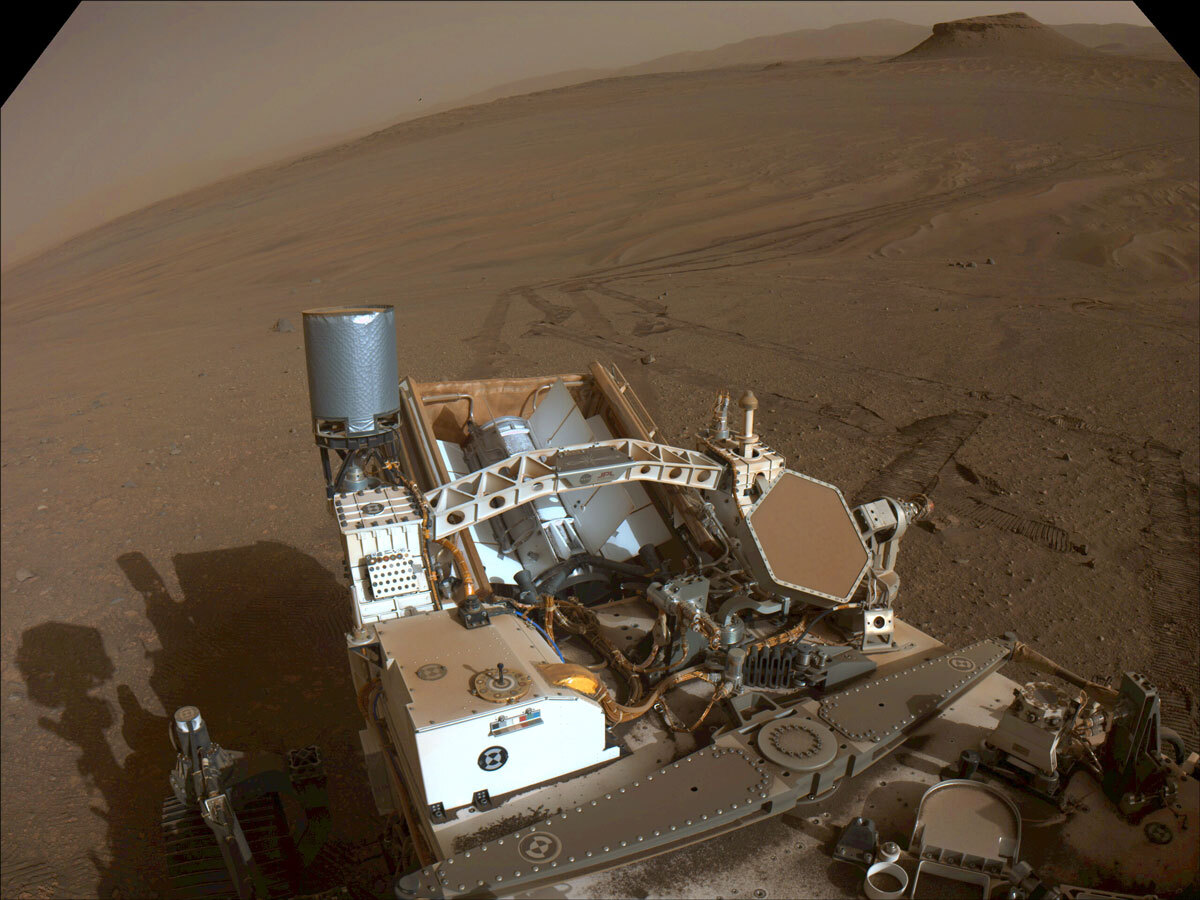Hard to believe, but the Perseverance Rover has begun its third year exploring Mars. On Feb. 18, 2021, Perseverance rover survived the harrowing landing at Jezero Crater, and almost immediately, began an expedition to collect a geologically diverse set of rock samples, ones that could help answer the question if Mars once had ancient microbial life.
JPL and NASA put together a wonderful two-year animation of images from the rover’s Front Left Hazard Avoidance Camera to celebrate Percy’s landing anniversary.
During the timelapse, you can see various rocks that Perseverance stopped to study with its robotic arm and sensors. The rover has now traveled almost 15 km (9 miles). In addition to studying numerous rocks, it has also collected and stowed away 18 sample containers of rocks, regolith, and even the Martian atmosphere, to be gathered later and brought to Earth in a future Mars Sample Return mission.
“Anniversaries are a time of reflection and celebration, and the Perseverance team is doing a lot of both,” said Perseverance project scientist Ken Farley of Caltech in Pasadena, in a press release. “Perseverance has inspected and performed data collection on hundreds of intriguing geologic features, collected 15 rock cores, and created the first sample depot on another world. With the start of the next science campaign, known as ‘Upper Fan,’ on Feb. 15, we expect to be adding to that tally very soon.”

NASA put together a huge list of rover highlights from the first two years.
“Behind each number is a lot of thought and effort from a very talented group of women and men on the Perseverance team,” said Art Thompson, Perseverance project manager at JPL. “We have come a long way together, and I can’t think of a better group to work with as we go even farther.”
Here is Percy’s two years by the numbers:
- Collected and sealed 18 samples
- Set down a depot of 10 sample tubes
- Laser shots fired by the SuperCam science instrument: 230,554
- Soundings performed by the RIMFAX (Radar Imager for Mars’ Subsurface Experiment) ground-penetrating radar to study underground rock layers: 676,828
- Mars audio recordings taken by SuperCam’s microphone: 662
- Hours of Mars weather data recorded by MEDA (Mars Environmental Dynamics Analyzer): 15,769.1
- Hours the X-ray filament on the PIXL (Planetary Instrument for X-ray Lithochemistry) instrument has operated: 298.2
- Laser shots by the SHERLOC (Scanning Habitable Environments with Raman & Luminescence for Organics & Chemicals) instrument: 4,337,010
- SHERLOC spectroscopy observations: 33
- Times the rover’s main robotic arm has been unstowed and stowed: 64
- Times the drill on that arm has touched Mars: 39
- Times drill bits have been exchanged: 48
- Abrasions performed by the drill: 17
- Distance the rover’s sample handling arm’s z-stage has traveled up and down: 676.1 feet (206.1 meters)
Perseverance’s Camera Statistics
Perseverance packs seven science cameras along with nine engineering cameras. Together, those cameras have taken more than 166,000 images. Here are the image tallies for several of them.
- Mastcam-Z: 86,660
- Navigation Cameras: 21,571
- Front Hazard-Avoidance Cameras: 3,909
- Rear Hazard-Avoidance Cameras: 474
- Sampling and Caching System Camera: 1,321
- SuperCam Remote Micro-Imager: 2,825
- SHERLOC WATSON: 5,754
- SHERLOC Context Imager: 2,260
- MEDA SkyCam: 1,831
- PIXL Micro-Context Camera: 1,012
- Entry, Descent, and Landing Cameras: 33,279
You can watch a presentation given by Dr. Sunanda Sharma, postdoctoral fellow, Mars 2020, at JPL last week, where she talks about the past two years of operation and discovery.

